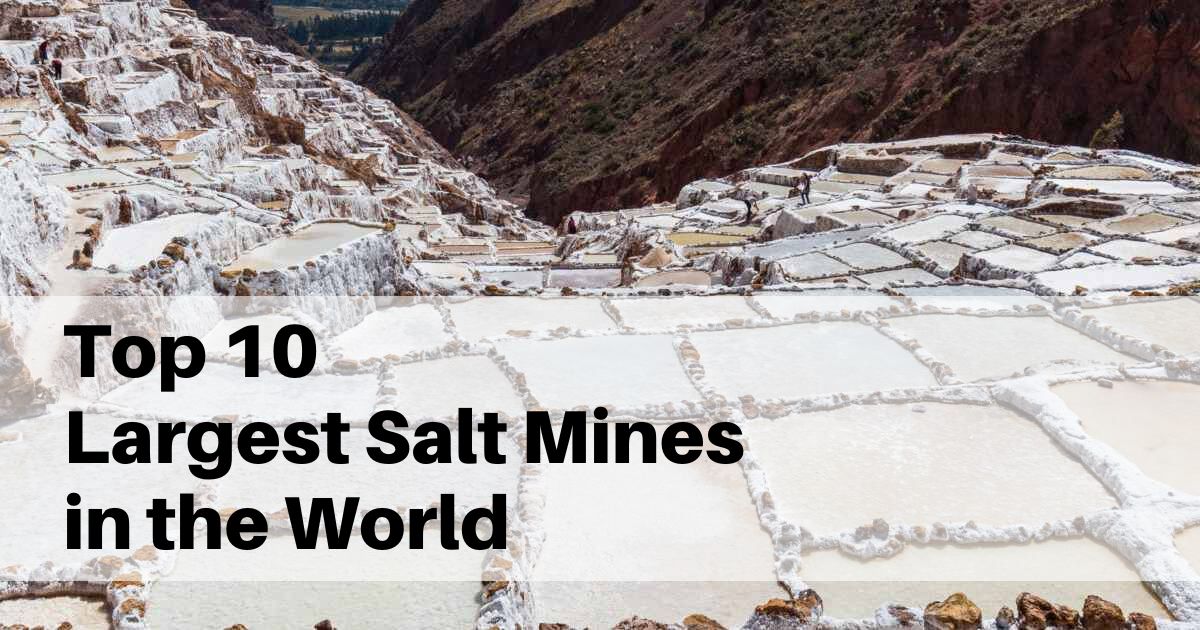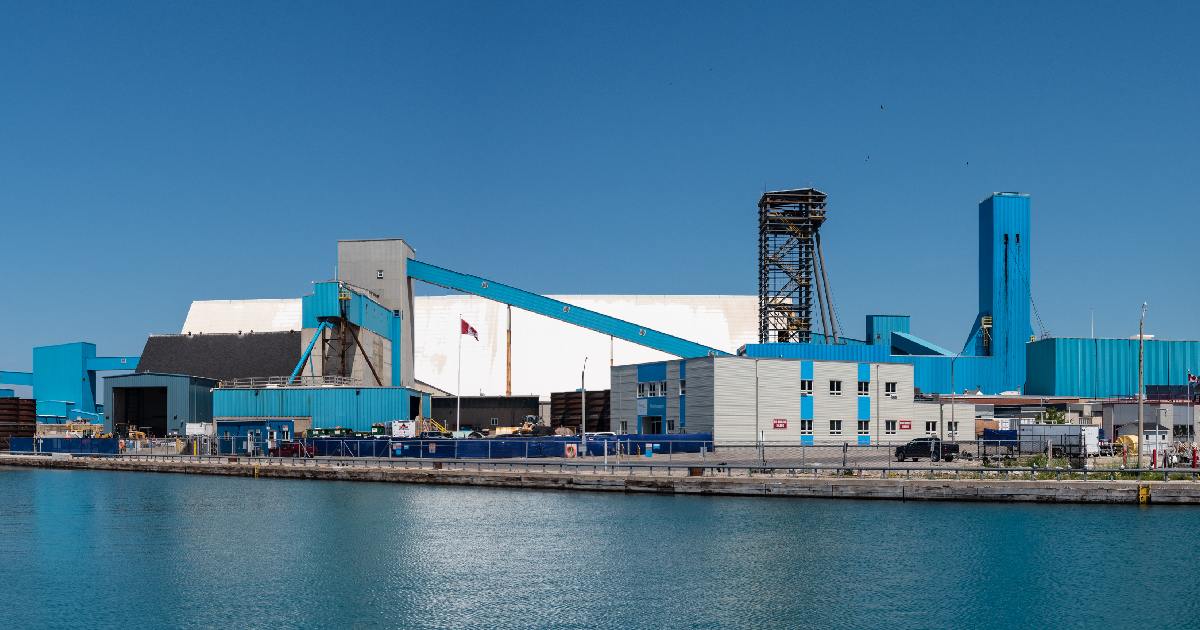
Salt, one of humanity’s oldest and most ubiquitous minerals, has profoundly shaped civilizations from ancient times to modern industrial economies. Its value extends beyond mere seasoning, playing critical roles in food preservation, medicinal treatments, and various industrial processes.
Today, the quest for salt has led to the development of vast caverns and extensive tunnels that mark the sites of the world’s largest salt mines. These geological wonders are industrial assets and historical landmarks that chronicle the evolution of mining technologies and economic developments over millennia.
This article invites you on a captivating journey to explore these subterranean marvels. As we delve into the depths of the Earth, we uncover the rich tapestry of history and innovation that each mine represents. From the sunlit evaporation ponds of the Atacama Desert to the dark, expansive tunnels under Lake Erie, these mines are pivotal in extracting the vital mineral that seasons our meals and safeguards our roads against ice in winter.
10. Cathedral of Salt in Colombia
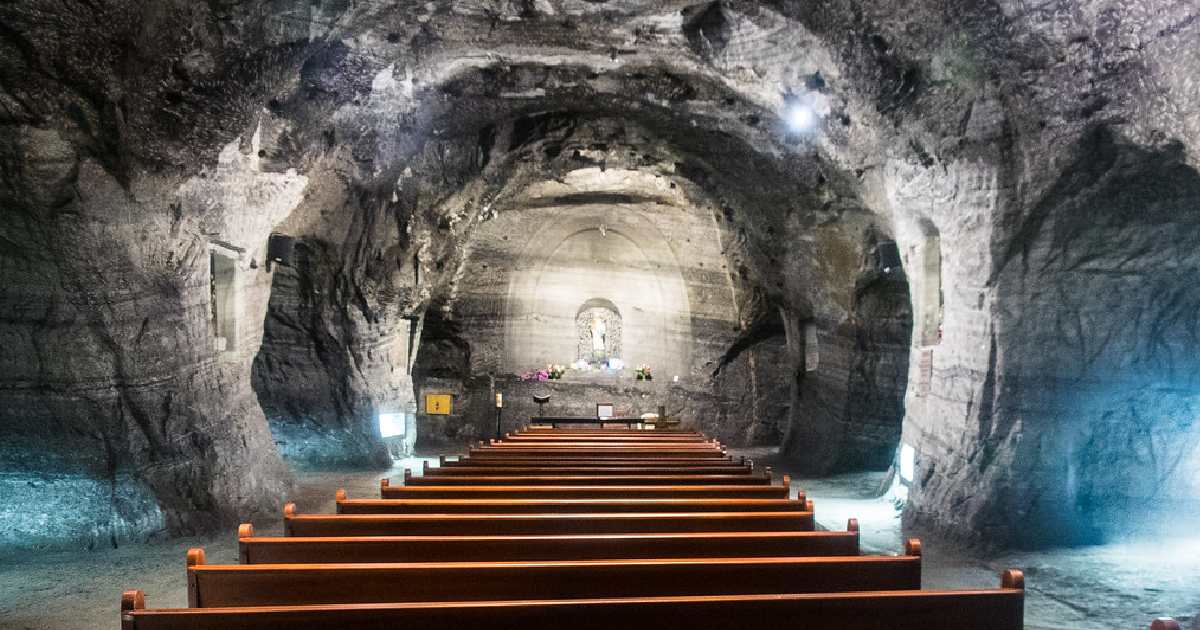
- Architectural Marvel: Carved within the Zipaquira salt mines used since 500 BCE.
- Historical and Cultural Significance: Blends salt mining history with cultural and religious practices.
- Size and Structure: 75 meters in length and 25 meters high, with a capacity for up to 10,000 people.
The Cathedral of Salt, located near Bogotá, is a marvel of modern architectural achievement and religious devotion, carved within the tunnels of a salt mine. This site blends the historical significance of salt mining in the region with cultural and religious practices, offering a unique glimpse into the cultural fabric of Colombia.
Colombia’s Cathedral of Salt is its largest salt mine. It was carved from Zipaquira salt mines, which have been used since 500 BCE. The Cathedral was inspired by a worker-built cathedral in an operational salt mine and was carved out in 1950. The original cathedral opened in 1954. After worries about structural soundness near an operating mine, officials closed the church in 1990. Still, the town built another cathedral 200 feet below the first, finishing it in 1995.
The current cathedral measures 75 meters in length and stands 25 meters high. A magnificent cross is intricately carved on the back wall. At full capacity, the cathedral can accommodate up to 10,000 people, and it regularly draws over 3,000 visitors on Sundays.
9. Asse Salt Mine, Germany
- Architectural Marvel: Initially an active rock salt mine, it has now been repurposed into a research facility for geological studies and radioactive waste storage testing.
- Historical and Cultural Significance: Played a crucial role in scientific research and safety testing for the storage of radioactive materials.
- Size and Structure: Features extensive underground chambers that have been adapted for scientific exploration.
Once an active mine extracting rock salt in 1906-1965, Asse Salt Mine has transitioned into a research facility where scientists study geological formations and the possibilities of storing radioactive waste securely. The mine’s extensive underground chambers now serve as crucial sites for scientific exploration and safety testing, highlighting the adaptability and long-term utility of such expansive salt caverns.
Between 1967 and 1978, approximately 125,000 barrels of low- and medium-level radioactive waste were stored in the mines. However, in 2008, media reports revealed that contaminated brine had been pumped into the deepest parts of the mine caverns. This was due to groundwater infiltrating the caverns, potentially corroding the barrels and leading to leaks. The risk was particularly concerning in the event of mine flooding.
Additionally, the mountain’s instability has caused cracks, contributing to the flooding. There is a concern that the caverns might collapse entirely. In 2010, a decision was made to remove the barrels, a process expected to take years. However, the potential exposure risk to local residents might make leaving the barrels in place more feasible.
8. Maras Salt Mine, Peru
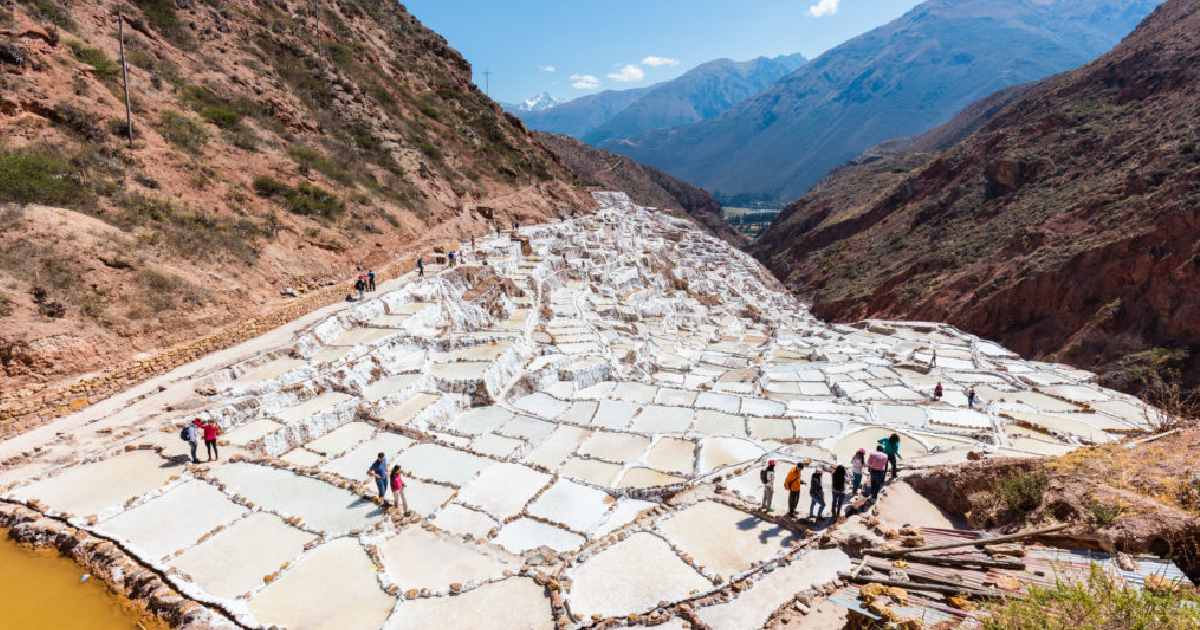
- Architectural Marvel: This salt mine consists of thousands of shallow pools that create a visually stunning landscape of natural salt terraces.
- Historical and Cultural Significance: An ancient pre-Incan salt extraction site that continues traditional salt farming methods.
- Size and Structure: Comprised of numerous small pools arranged on a hillside, utilizing natural gradients for saltwater flow and evaporation.
The Maras Salt Mine in the Sacred Valley of the Incas is not only a stunning visual spectacle but also a fine example of a pre-Incan tradition that persists to this day. Thousands of shallow pools filled with saltwater eventually evaporate under the sun, leaving behind crystalline formations of natural salt—a picturesque yet practical method of salt extraction.
7. Danakil Salt Pan, Ethiopia
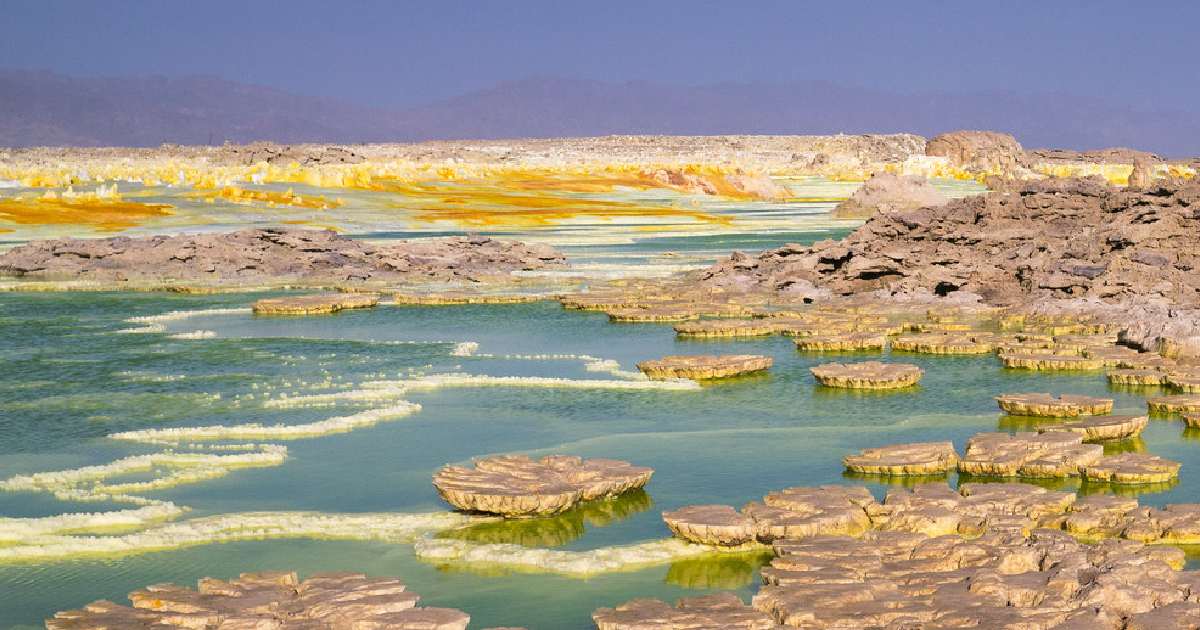
- Architectural Marvel: It is not architecturally designed but is a natural geological formation adapted for salt mining.
- Historical and Cultural Significance: Essential for the local economy and cultural identity of the Afar people, who have mined salt here for centuries.
- Size and Structure: Extensive salt pan situated below sea level in one of the hottest environments on earth.
In the hostile environment of the Danakil Depression, one of the hottest places on the planet lies a vast salt pan where salt has been mined for centuries by the Afar people. The harsh conditions make salt mining in Danakil a formidable challenge, yet it remains a vital part of the local economy and a testament to human resilience.
Parts of Danakil, situated more than 300 feet below sea level, are encircled by volcanic formations and can experience temperatures soaring above 120 degrees during the summer months. Despite these harsh conditions, the Afar people skillfully navigate this extreme environment, venturing into the basin in the cooler early morning hours when temperatures drop to between 50-60 degrees Celsius. They harvest salt from an extensive 800 mm layer, cutting it into blocks.
6. Palibelo Village (Bima Salt Pans), Indonesia
- Architectural Marvel: Utilizes traditional and sustainable salt farming techniques involving large evaporation pans.
- Historical and Cultural Significance: A key component of the local culture and economy, with a long history of artisanal salt production.
- Size and Structure: Covers nearly 7 square miles, making it a significant area for traditional salt production.
In the lesser-known village of Palibelo in Indonesia, traditional salt farming techniques are still in practice, where seawater is evaporated in large pans to yield high-quality salt. This artisanal approach maintains a sustainable relationship with nature, preserving both the environment and the community’s way of life in stark contrast to the massive industrial operations seen elsewhere.
Spanning almost 7 square miles, the salt pans in Bima Bay have been a longstanding site of salt production, crucial to the region for centuries. The salt harvested here has not only circulated throughout the Indonesian archipelago but also reached Malaysia and the Philippines, often transported by the Bugis sea gypsies. Today, despite its status as one of the island’s key commodities, the production of Bima salt remains predominantly a small-scale operation.
5. Wieliczka Salt Mine, Poland
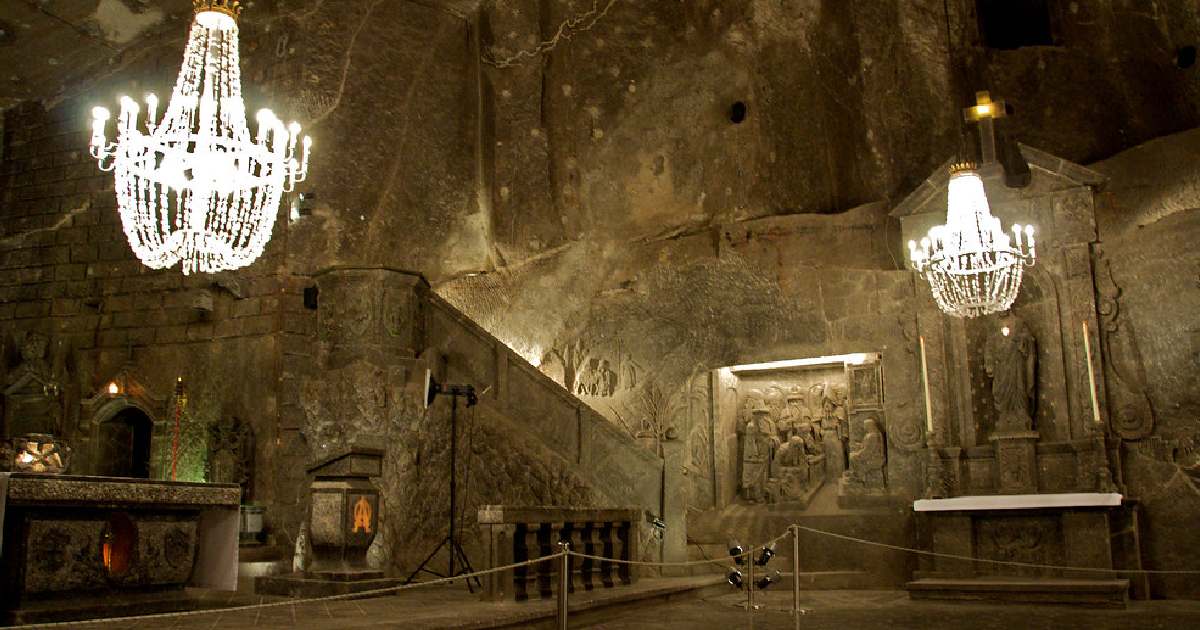
- Architectural Marvel: Features underground chapels and statues carved entirely out of rock salt, along with saline lakes.
- Historical and Cultural Significance: A UNESCO World Heritage site that has been a significant part of Poland’s mining history since the Middle Ages.
- Size and Structure: Extensive network of chambers and tunnels that display a range of artistic and architectural salt carvings.
Stepping into the Wieliczka Salt Mine is like entering a living museum of human effort and natural beauty. This UNESCO World Heritage site, operational since the Middle Ages, features everything from underground chapels carved entirely out of rock salt to magnificent saline lakes that mirror intricately carved statues. The mine’s historical significance and its contribution to Poland’s cultural heritage make it a must-visit for anyone fascinated by the interplay of nature and human creativity.
Formed during the Miocene Era, approximately 13.6 million years ago, the mine’s rich grey salt deposits have been exploited since historical records first mentioned them in the 12th century, linked to a Benedictine Monastery.
It operated industrially from the 13th century until its closure in 1996, enduring even through German occupation from 1939 to 1944. The Chapel of the Holy Cross in the Franz Joseph I Chamber is noteworthy within the mine, constructed in 1871 to commemorate the prolonged battle against flooding, an issue exacerbated by magnesium-potassium mining. Additionally, attractions like the Crystal Grotto and historic saline baths contribute to its status as a significant tourist attraction.
4. Atacama Salt Flat, Chile
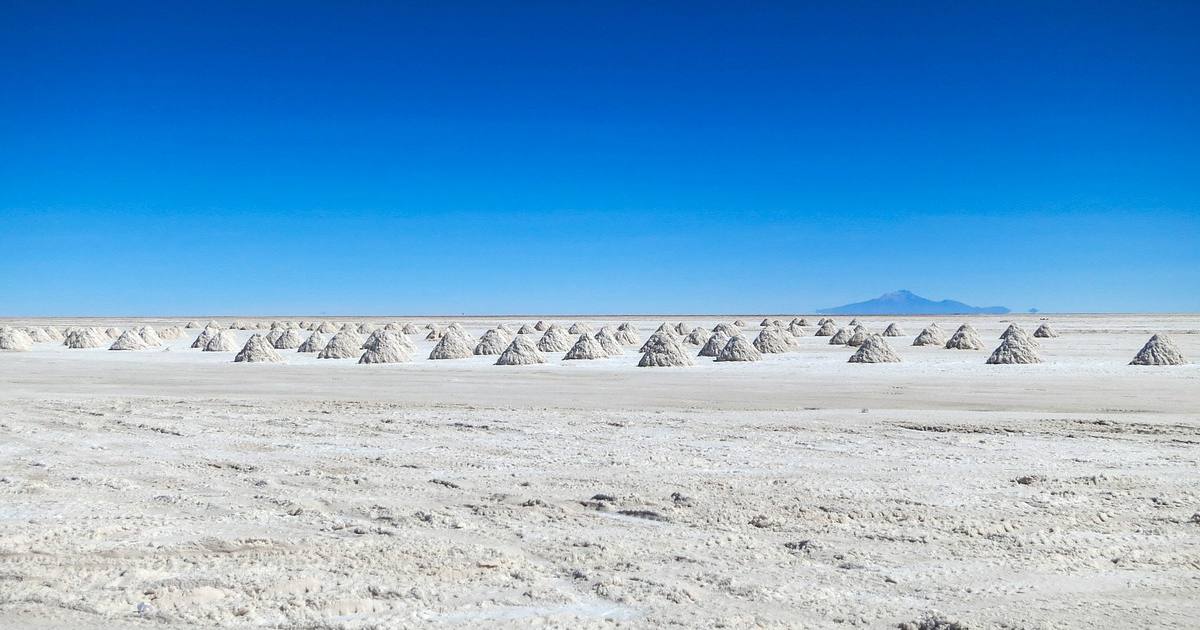
- Architectural Marvel: A vast, dry expanse of crystalline salt, crucial for lithium extraction, not a constructed mine but a natural flat.
- Historical and Cultural Significance: Important to Chile’s economic development and global lithium production.
- Size and Structure: One of the largest sources of lithium, spanning a large area in one of the driest places on Earth.
Unlike traditional mines, the Atacama Salt Flat presents a vast, dry expanse of crystalline salt in one of the driest places on Earth. This salt flat, rich in lithium and sodium, is crucial in meeting the global demand for lithium, used in batteries and various industrial processes. The strikingly beautiful landscape of the Atacama not only contributes significantly to Chile’s economy but serves as a habitat for unique wildlife adapted to its harsh conditions.
Lithium and boron are extracted from the brine of the Salt Flat, specifically in its southern region, where they are found in forms such as ulexite and various salts of lithium sulfate, including double and triple combinations. The Atacama Salt Flat is the largest and purest active lithium source globally, holding about 2017% of the world’s lithium reserve base. By 2017, it was responsible for producing approximately 36% of the global lithium carbonate supply, highlighting its significant role in the lithium market.
3. Prahova Salt Mine, Romania
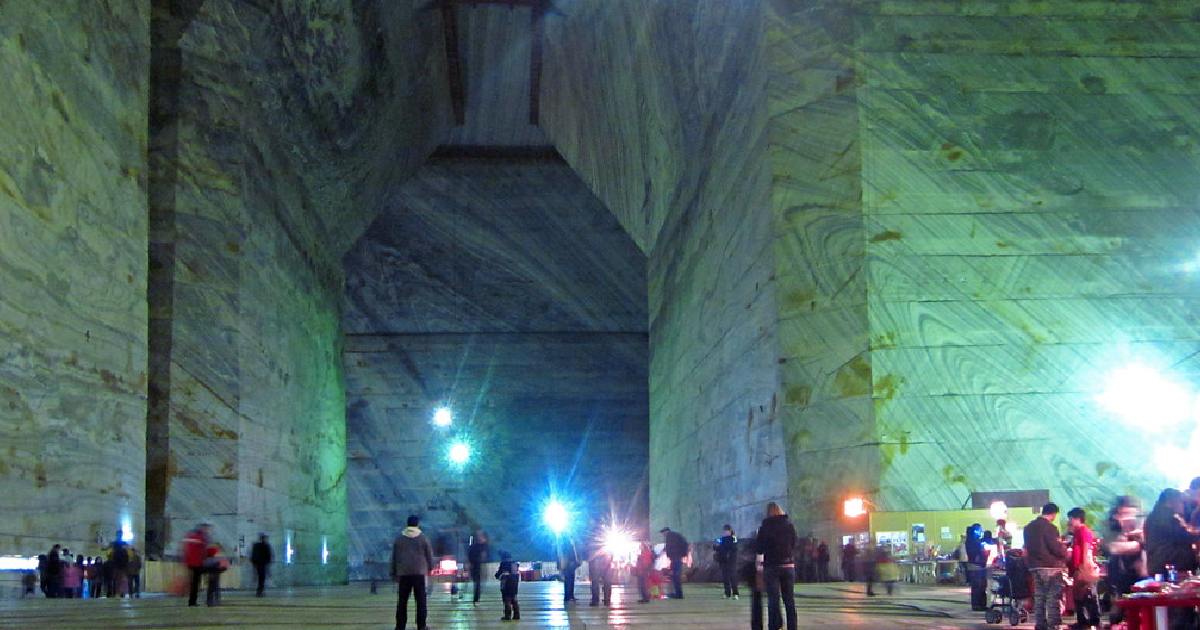
- Architectural Marvel: Known for its impressive underground galleries and salt sculptures.
- Historical and Cultural Significance: Serves as both a historical monument and a health retreat, offering therapeutic properties in its salt-enriched air.
- Size and Structure: Large trapezoidal chambers provide a vast subterranean landscape, enhancing its use as a therapeutic environment.
Nestled in Slanic, the Prahova Salt Mine is celebrated as the largest salt mine in Europe. Its extensive trapezoidal chambers, carved out of the earth, provide a surreal underground landscape that also doubles as a health retreat for those with respiratory ailments, thanks to the therapeutic properties of its air. The mine’s historical layers add depth to its grandeur, with each room telling tales of a bygone era when salt was as valuable as gold. The mine’s environment, consistently cool and laden with salt dust, provides a unique subterranean escape for health and history enthusiasts.
The salt mine is open to the public and features 14 stunning galleries—literally breathtaking, as visits are even recommended for treating certain respiratory infections. Within these expansive spaces, visitors can admire intricate salt carvings, including motifs, sculptures, and busts. One notable sculpture is that of Decebal, the last king of the Dacians, the ancestors of the Romanian people. The galleries themselves are impressive, soaring over 55 meters high, surpassing the height of the Statue of Liberty if you discount its foundation.
2. Khewra Salt Mines, Pakistan
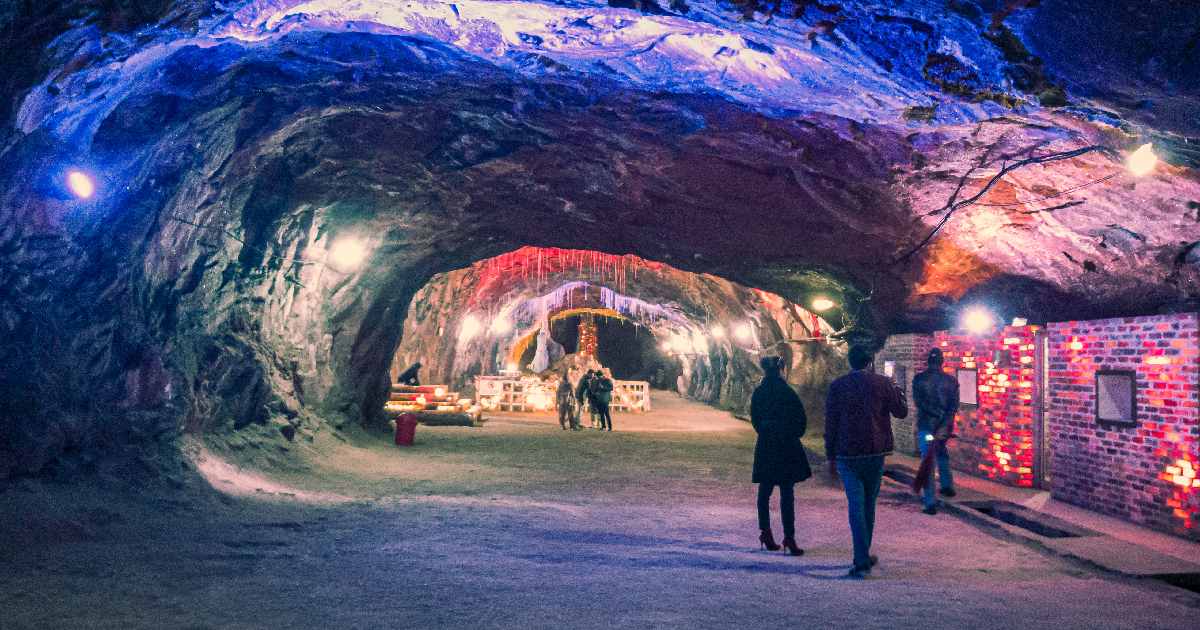
- Architectural Marvel: Showcases geological beauty with artistic salt carvings and an underground salt lake.
- Historical and Cultural Significance: Dating back to the time of Alexander the Great, it’s renowned for its rich deposits of Himalayan pink salt.
- Size and Structure: Encompasses a vast network of tunnels, with a large part of the structure supported by salt columns left intact during mining.
Located in the heart of Punjab, the Khewra Salt Mine holds the title of the second-largest salt mine in the world. This historical mine, dating back to the days of Alexander the Great, is renowned for its rich pink salt, which is not only a culinary delight but also a sought-after mineral for health and decorative purposes. The mine’s vast network of tunnels showcases geological beauty and serves as a major tourist attraction, highlighting an underground salt lake and the artistic craftsmanship of miners through carved salt structures.
Today, the Khewra Salt Mines is the second largest globally, producing about 325,000 tons of salt annually. Despite the staggering extraction of approximately 220 million tons over its operational history, this figure barely scratches the surface of the estimated 6.687 billion tons of salt reserves. The mine, which plunges 748 feet deep and comprises 11 stories, is a labyrinth of tunnels extending nearly half a mile into the mountain. Remarkably, only half of the extracted material is removed; the other half is left behind to serve as support columns within this vast underground structure.
1. Sifto Salt Mine, Ontario, Canada
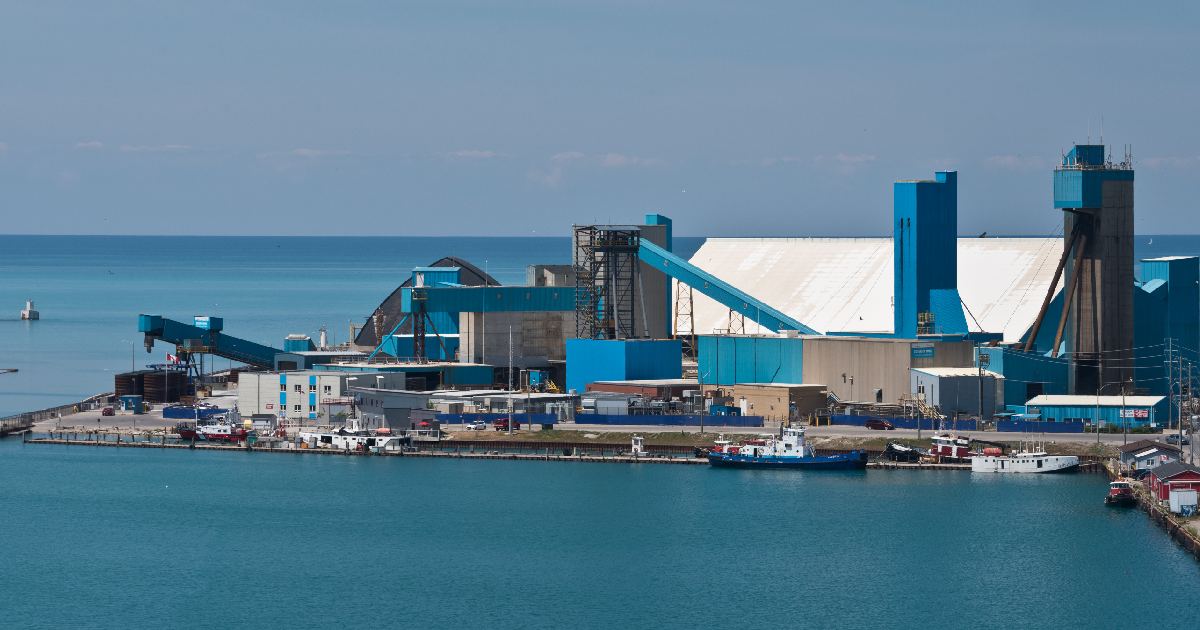
- Architectural Marvel: Features a complex underground city with extensive infrastructure tailored for efficient mining and transportation.
- Historical and Cultural Significance: It plays a critical role in North America’s salt supply, particularly for de-icing roads during winter.
- Size and Structure: Deep and extensive, with an elaborate network of roads used by heavy-duty mining equipment, reflecting its vast scale and operational complexity.
Deep beneath the surface of Lake Huron lies the Sifto Salt Mine, part of the largest salt mining operation in the world. The mine reaches as deep as the CN Tower in Toronto, which is tall and has been an integral part of Canada’s rock salt production since 1959. This underground powerhouse not only supplies much-needed de-icing salt for North American winters but also contributes to various industries with its high-quality salt products.
The primary use of rock salt from the mine serves a crucial, life-saving purpose: distributed across North America, it is used to prevent the formation of dangerous black ice on roads during winter, thereby reducing accidents and fatalities. Below the mine’s lake bed lies an extraordinary underground town where approximately 400 people work.
This subterranean city features robust roadways used by 40-ton dump trucks, which are dismantled, lowered into the mine, and permanently reassembled there. The complexity of the mine’s 100 miles of roadways once supported a bus system, but now workers use a fleet of John Deere Gators to navigate the extensive network of service depots, lunch rooms, storage caverns, workshops, and plants, illustrating the unique and extensive infrastructure of this mining operation.
Conclusion
These ten sites represent the pinnacle of salt mining around the world, showcasing not just the scale and historical significance of salt production but also the diverse ways in which human cultures interact with this essential mineral. From the vast, mechanized chambers of the Sifto Salt Mine beneath Lake Huron to the colorful salt flats of Atacama and the sacred depths of the Cathedral of Salt, each mine tells a unique story of geological wealth and human ingenuity.
Visiting these mines, one can’t help but be awestruck by the sheer scale of human effort and the beauty that often accompanies it. So, if your travels ever take you near any of these colossal mines, consider descending into the depths to explore the cool, saline air and the dark, yet strikingly illuminated tunnels of these underground realms. It’s an experience that connects us not only to the Earth’s past but also to the ongoing story of human civilization.
Frequently Asked Questions (FAQs)
Where is the 2nd largest salt mine in the world?
The second largest salt mine in the world is the Khewra Salt Mine, located in Punjab, Pakistan. It is one of the oldest and most significant salt mines, famous for its production of rich pink salt. The mine’s extensive network of tunnels includes features such as an underground salt lake and intricate salt carvings, making it a major tourist attraction as well.
Who is the largest producer of salt in the world?
China is the largest producer of salt in the world. The country’s vast salt production industry includes traditional sea salt and rock salt mining operations, contributing significantly to the global salt supply. China leverages its extensive coastline for solar evaporation of seawater and numerous inland mines for rock salt extraction.
What is the most famous salt mine in the world?
The Wieliczka Salt Mine in Poland is arguably the most famous salt mine in the world. This UNESCO World Heritage site has been operational since the 13th century and features elaborate underground chapels, sculptures, and lakes all carved from rock salt. Its historical and cultural significance, combined with its stunning subterranean architecture, draws millions of tourists each year.
Where are the largest salt mines in the US?
The largest salt mines in the US are located in Louisiana and New York. The Avery Island and Cote Blanche salt mines in Louisiana are among the largest, producing millions of tons of rock salt annually. Additionally, the Retsof Mine in New York, though now closed, was historically one of the largest salt mines in the country. These mines contribute significantly to the US’s salt production and are crucial for de-icing and industrial uses.
Which country has the largest salt fields in the world?
Bolivia is home to the largest salt flat in the world, the Salar de Uyuni. This expansive salt flat covers over 10,000 square kilometers and contains vast reserves of salt, along with significant lithium deposits. The Salar de Uyuni is not only a crucial resource for salt production but also a popular tourist destination known for its stunning reflective surface during the rainy season.

